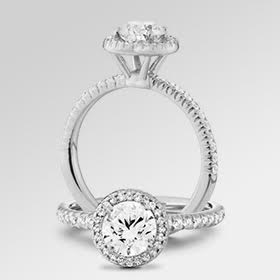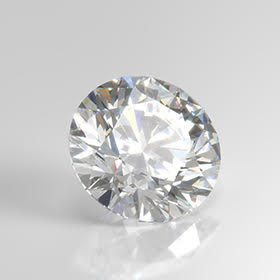The diamond industry life cycle has entered a new phase with the introduction of lab-grown diamonds. Lab-grown diamond manufacturing companies have disrupted the diamond trade as they produce lab-grown diamonds with the same chemical, physical, and optical properties as mined diamonds. Due to the shorter supply chain, lab grown diamonds are priced less than mined diamonds. Savvy consumers have embraced this trend.
History of Lab-Grown Diamonds
Around 1797, it was discovered that diamonds are pure carbon. Since then, many attempts have been made to produce diamonds in a laboratory, and for less. In the late 1800s, James Ballantyne Hannay and Ferdinand Frédéric Henri Moissan both tried by heating charcoal with iron inside a carbon crucible at a temperature of 3500° Celsius in a furnace. Although not successful, many scientists continued the work of creating diamonds in a lab setting.
Momentum increased in the 1940s when scientists in the United States and other countries were successful in creating diamonds employing the Chemical Vapor Deposition (CVD) and High Pressure - High Temperature (HPHT) methods. Due to their unique properties, including; high electrical resistance, thermal conductivity, hardness, and optical transparency, lab-grown diamonds were initially introduced for industrial purposes. Interestingly, both the CVD and HPHT methods are still widely in use today.
General Electric is credited with being the first company to create significant quantities of lab-grown diamonds during the 1950s. Gem quality lab-grown diamonds have been commercially available since the late 1980s.
Ethics and Sustainability of Mined Diamonds
The mined diamond industry has suffered from negative consumer perceptions. The industry has a history of both human conflict (highlighted by the movie Blood Diamond), and unsustainable production methods, including; deforestation, water pollution, and soil erosion. These issues resonate strongly, particularly among Millennials who place significant weight on social responsibility in purchasing decisions. Millennials view lab-grown diamonds as a more socially and environmentally responsible solution.
Recent Developments
Given all the controversary surrounding mined diamonds, traditional diamond companies have entered the lab-grown diamond market. In 2018 the most famous global diamond company, De Beers launched; Lightbox, a new brand of lab grown diamond jewelry.
“The Global Diamond Industry Report” from Bain & Company reported lab-grown diamond market share increased 15% - 20% in 2019. Since most retail and online jewelry operations are only now entering the lab-grown diamond market, this share is expected to grow quickly.
Today, lab-grown diamonds are priced 20% - 30% less than mined diamonds. Since lab-grown diamonds have the same chemical, physical, and optical properties as mined diamonds, they are a smart choice.
The origins of lab-grown diamonds can be traced back almost 150 years. Although initially used for industrial purposes, today consumers everywhere are choosing lab-grown diamonds for all types of jewelry; engagement rings, band rings, fashion rings, bracelets, earrings, necklaces, pendants, and men’s rings.
This history of lab-grown diamonds may have been a brief, but we hope it has given you some interesting insights into the past, present, and future of this exciting industry.
For more on lab-grown diamonds, refer to our blog section, and please leave your feedback about this write-up in the comments section below.










